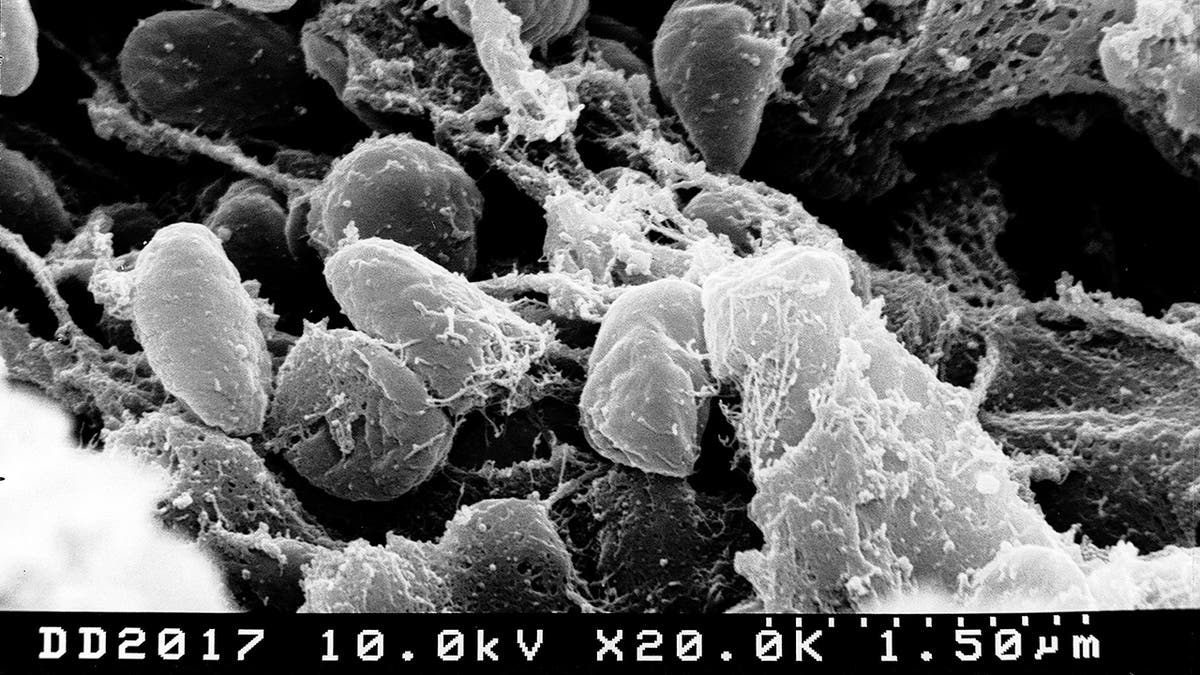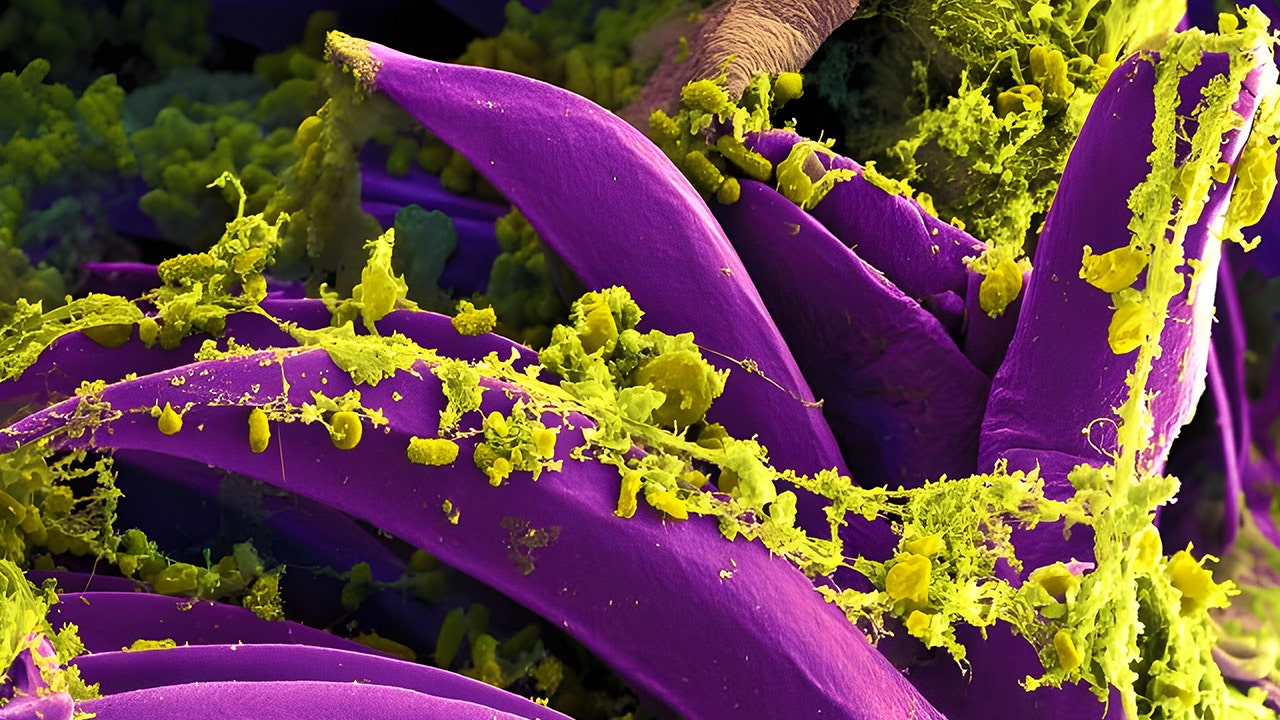An Oregon resident has been infected with the state’s first case of bubonic plague since 2015, health officials said last week.
The resident was likely infected with plague by their symptomatic pet cat, Deschutes County Health Services said in a news release on Wednesday.
“All close contacts of the resident and their pet have been contacted and provided medication to prevent illness,” Dr. Richard Fawcett, the Deschutes County health officer, said in the release without identifying the infected resident.
Officials said there was little risk to the community since the case was identified and treated in the earlier stages of the disease. No additional cases of plague have emerged during the communicable disease investigation.
SUPER BOWL STAPLES RECALLED OVER LISTERIA OUTBREAK IN TACO KITS, BEAN DIPS, DAIRY PRODUCTS: CDC
Scanning electron micrograph of Yersinia pestis, which causes bubonic plague. (NIH/NAID/IMAGE.FR/BSIP/Universal Images Group via Getty Images, File)
The bubonic plague can progress into the more severe and difficult to treat septicemic plague (bloodstream infection) and/or pneumonic plague (lung infection) if not diagnosed early.
The last case of human plague in Oregon was reported in 2015, according to Oregon Health Authority.

A mass of Yersinia pestis bacteria, the cause of bubonic plague, as seen in the foregut of a flea vector. (IMAGE POINT FR/NIH/NIAID/BSIP/Universal Images Group via Getty Images)
Humans typically begin to show symptoms of the plague within two to eight days of exposure. Symptoms can include a sudden onset of fever, nausea, weakness, chills, muscle aches and visibly swollen lymph nodes called buboes.
AS SYPHILIS CASES SURGE IN THE US, HERE’S WHAT INFECTIOUS DISEASE EXPERTS WANT YOU TO KNOW
Humans can be infected through bites or contact with infected fleas or animals.

A bubonic plague smear demonstrating the presence of Yersinia pestis bacteria. (Smith Collection/Gado/Getty Images)
In Central Oregon, officials warned that the most common animals to carry bubonic plague are squirrels and chipmunks, though they noted that mice and other rodents can also carry the disease.
To prevent the spread of the plague, officials recommend that residents and pets avoid all contact with rodents and fleas, including sick, injured or dead rodents.





